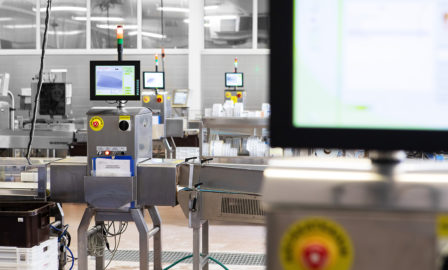
The Importance of Transparency and Accountability in 2023
As we look ahead to the year 2023, it’s important to consider the various trends that will shape the food industry in terms of safety and quality. One major trend that will continue to gain momentum is the push for greater traceability of food products. This means that companies will need to be able to track and trace food products from the factory all the way to the consumer. This is becoming increasingly important as consumers demand more transparency and accountability from food companies.
New Technologies and Sustainability: Key Trends Impacting the Food Industry in 2023
In order to achieve greater traceability, food manufacturers will need to invest in new technologies and data management systems. This will enable them to more effectively track and trace food products throughout the supply chain. This can include things like primary packaging inspection, barcode scanning, and other forms of digital tracking. By leveraging these technologies, companies will be able to more quickly and easily identify and isolate any potential food safety issues, which can help to prevent food recalls and other crises.
Another key trend that will shape the food industry in 2023 is the growing focus on sustainability. Consumers are becoming increasingly concerned about the environmental impact of the food they eat, and they are looking for companies that are making an effort to reduce their carbon footprint and minimize their environmental impact. To address this, companies are reducing food waste, using eco-friendly packaging, and sourcing ingredients from sustainable sources. These efforts not only benefit the environment, but also benefit the companies by cutting costs and boosting consumer trust.

Climate Change Exacerbates Food Fraud as Industry Faces Increased Challenges in Traceability and Product Authenticity
Food fraud, defined as the intentional misrepresentation of food products for monetary benefit, is an increasing problem in the food industry. It can take different forms, such as deceptively identifying a food product’s origin or contents, or substituting a product with a cheaper substitute. Climate change is exacerbating the situation by making crop yields less predictable and increasing demand for imported foods, creating more possibilities for counterfeit or inferior products to enter the supply chain.
Furthermore, if the cost of food production grows as a result of issues such as water shortages and poor weather, some farmers may resort to deceptive techniques to save money. Climate change makes it more difficult for consumers to grasp the complexity of global food systems, as well as the environmental and social consequences of food choices. To prevent food fraud, companies must use traceability systems, in which food x-ray inspection systems are part of, to track the authenticity and safety of raw ingredients from the fields to the tables.


Investing in Employee Training and X-ray Inspection Systems
To keep up with these trends and ensure that food safety practices are being followed, companies are investing in training and education programs for their employees. This includes training on new technologies and regulations, as well as ongoing food safety education to keep all employees up to date on the latest best practices. By investing in the skills and knowledge of their workforce, companies can better meet the evolving needs of the market and protect the safety of their products.
Food companies that are able to demonstrate their commitment to sustainability will be at a competitive advantage, as consumers are becoming more likely to choose products from companies that they perceive as being more environmentally friendly
In terms of food safety, X-ray inspection systems play a key role in ensuring the safety and quality of food products. They detect a wide range of contaminants, including metal, glass, bones, and certain types of plastics, that can pose a serious risk to consumers. X-ray inspection systems are also able to detect other issues that can affect food quality, such as missing or broken pieces.

X-ray Inspection Systems: A Key Tool for Meeting Food Industry Trends and Ensuring Traceability, Safety and Sustainability in 2023
In addition to providing a high level of food safety, X-ray inspection systems are also very efficient. They are able to scan large volumes of food products very quickly, and they can be integrated into existing production lines with minimal disruption. This helps companies to maintain their production schedules, while still ensuring that their food products are safe and of high quality. X-ray inspection systems’ adaptability allows producers who use the technology to stay ahead of the competition by anticipating and meeting future requirements. As technology continues to evolve, X-ray inspection systems can be easily adapted to meet changing requirements. This can include things like new regulations and standards, as well as new and emerging contaminants.
In summary, as we look ahead to 2023, it’s clear that traceability, data management, and sustainability will continue to be major trends in the food industry. Companies that are able to effectively address these trends will be well-positioned for success in the years to come. X-ray inspection systems, with their ability to detect a wide range of contaminants, adaptability, and efficiency, can play an important role in helping companies to ensure the safety, quality and traceability of their food production, while also meeting the demands of consumers and regulators alike.
Food X-Ray Inspection
Ensuring the safety of the products and helping to build a trusted food brand by detecting metallic and non-metallic hazardous foreign objects as well as other quality defects, such as missing or broken products.
Read moreTraceability in the Food Industry
Traceability is one of the top trends in food industry. How X-ray inspection contributes to that?
Read more